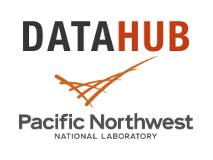Journal Article
Atmospheric Measurement Techniques, vol. 12, iss. 12, pp. 6845-6864, 2019
Authors
Darielle Dexheimer, Martin Airey, Erika Roesler, Casey Longbottom, Keri Nicoll, Stefan Kneifel, Fan Mei, R. Giles Harrison, Graeme Marlton, Paul D. Williams
Abstract
Abstract. A tethered-balloon system (TBS) has been developed and is being
operated by Sandia National Laboratories (SNL) on behalf of the U.S.
Department of Energy's (DOE) Atmospheric Radiation Measurement (ARM) User
Facility in order to collect in situ atmospheric measurements within
mixed-phase Arctic clouds. Periodic tethered-balloon flights have been
conducted since 2015 within restricted airspace at ARM's Advanced Mobile
Facility 3 (AMF3) in Oliktok Point, Alaska, as part of the AALCO (Aerial
Assessment of Liquid in Clouds at Oliktok), ERASMUS (Evaluation of Routine
Atmospheric Sounding Measurements using Unmanned Systems), and POPEYE
(Profiling at Oliktok Point to Enhance YOPP Experiments) field campaigns. The
tethered-balloon system uses helium-filled 34 m3 helikites and 79 and
104 m3 aerostats to suspend instrumentation that is used to measure
aerosol particle size distributions, temperature, horizontal wind, pressure,
relative humidity, turbulence, and cloud particle properties and to
calibrate ground-based remote sensing instruments. Supercooled liquid water content (SLWC) sondes using the vibrating-wire
principle, developed by Anasphere Inc., were operated at Oliktok Point at
multiple altitudes on the TBS within mixed-phase clouds for over 200 h.
Sonde-collected SLWC data were compared with liquid water content derived
from a microwave radiometer, Ka-band ARM zenith radar, and ceilometer at the AMF3, as well as liquid water content derived from AMF3 radiosonde flights. The in situ data collected by the Anasphere sensors were also compared with data collected simultaneously by an alternative SLWC sensor developed at the University of Reading, UK; both vibrating-wire instruments were typically observed to shed their ice quickly upon exiting the cloud or reaching maximum ice loading. Temperature sensing measurements distributed with fiber optic tethered balloons were also compared with AMF3 radiosonde temperature measurements. Combined, the results indicate that TBS-distributed
temperature sensing and supercooled liquid water measurements are in
reasonably good agreement with remote sensing and radiosonde-based
measurements of both properties. From these measurements and sensor
evaluations, tethered-balloon flights are shown to offer an effective method
of collecting data to inform and constrain numerical models, calibrate and
validate remote sensing instruments, and characterize the flight environment
of unmanned aircraft, circumventing the difficulties of in-cloud unmanned aircraft flights such as limited flight time and in-flight icing.
